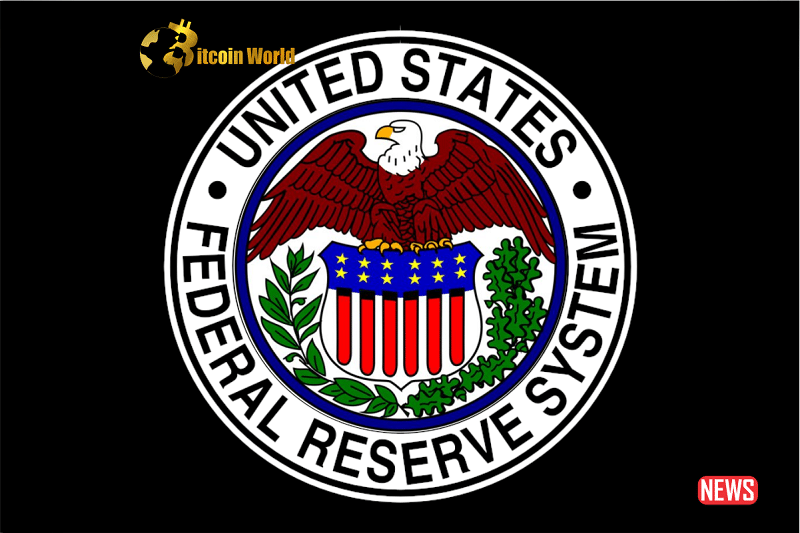Ever wondered how US banks are navigating the choppy waters of today’s economy? The Federal Reserve’s Bank Term Fund Program (BTFP) has emerged as a critical support system, offering a financial lifeline to institutions facing liquidity challenges. Recent data paints a clear picture: as of June 7th, the BTFP has extended a significant $100.16 billion in loans. This marks an increase from the previous week’s $93.61 billion, highlighting the continued reliance of banks on this program.
Why Was the BTFP Created? A Safety Net for Banks
Think back to the recent banking turbulence. The BTFP was launched during that period of uncertainty with a clear objective: to provide immediate liquidity to banks facing a surge in withdrawal requests. Imagine a bank holding a portfolio of assets like government bonds. The BTFP allows these banks to use these assets as collateral to secure funding from the Fed. The beauty of this? It prevents banks from being forced to sell off valuable assets at potentially fire-sale prices during times of financial stress.
The Numbers Don’t Lie: Demand for BTFP Funding Persists
The rising loan figures from the BTFP tell a story. It suggests that the demand for additional funding within the US banking sector remains strong. Even as time passes since the initial crisis, banks are still feeling the pinch. Why is this the case?
- Meeting Depositor Obligations: Banks need readily available funds to meet their obligations to depositors. The BTFP helps bridge any gaps.
- Navigating Monetary Policy: The Federal Reserve’s current monetary policies, while aimed at controlling inflation, are creating ripples across the financial landscape.
The Rate Hike Ripple Effect: How Fed Policies Impact Banks
Let’s talk about interest rates. Over the past 14 months, the Federal Reserve has implemented a series of ten consecutive rate hikes. This has pushed the benchmark interest rate to around 5.08%, a level unseen since 2007. What does this mean for banks?
Consider a bank that invested heavily in treasuries when interest rates were near zero. As interest rates rise, newly issued debt becomes more attractive to investors, offering higher returns. Consequently, the value of the older, lower-yielding treasuries held by banks decreases. This creates what are known as ‘unrealized losses’.
Unrealized Losses: A Hidden Challenge
Recent reports indicate that US banks are grappling with approximately $620 billion in unrealized losses. That’s a significant number! These losses, while not immediately impacting day-to-day operations, can erode a bank’s capital and overall financial stability. This is where programs like the BTFP become even more crucial, providing a buffer against these financial headwinds.
BTFP: A Closer Look at the Mechanics
How exactly does the BTFP work? Here’s a simplified breakdown:
- Eligibility: Eligible banks can borrow from the BTFP.
- Collateral: Banks pledge high-quality assets (like government bonds) as collateral.
- Valuation: The collateral is valued at par (face value), mitigating losses associated with market fluctuations.
- Duration: Loans can have a term of up to one year.
- Interest Rate: Borrowers pay the one-year overnight index swap rate plus a fixed spread.
Benefits of the Bank Term Fund Program
The BTFP offers several key advantages to the banking system:
- Enhanced Liquidity: Provides immediate access to funds, ensuring banks can meet their obligations.
- Asset Protection: Prevents the need for distressed asset sales.
- System Stability: Contributes to the overall stability of the financial system by reducing the risk of bank runs.
Challenges and Considerations
While the BTFP is a valuable tool, it’s important to consider potential challenges:
- Moral Hazard: Concerns exist that such programs might encourage excessive risk-taking in the future.
- Long-Term Dependence: The reliance on the BTFP could become a long-term trend if underlying issues aren’t addressed.
The Bigger Picture: What Does This Mean for the Future?
The continued demand for the BTFP underscores the ongoing challenges faced by US banks in the current economic environment. The Federal Reserve’s efforts to combat inflation through interest rate hikes have had a direct impact on bank balance sheets. Programs like the BTFP are providing vital support, but it’s crucial to monitor their impact on the long-term health and stability of the banking industry.
Key Takeaways:
- The BTFP has provided over $100 billion in loans to US banks.
- This program helps banks manage liquidity and avoid selling assets at a loss.
- Rising interest rates have created significant unrealized losses for banks.
- The BTFP plays a crucial role in maintaining financial stability.
Looking Ahead
As the economic landscape continues to evolve, the role of the BTFP will remain significant. Keeping a close eye on borrowing trends and the overall impact of such lending programs will be essential for understanding the future of the US banking sector. The BTFP serves as a crucial mechanism, helping banks navigate these turbulent times and ensuring the continued flow of credit within the economy.
Disclaimer: The information provided is not trading advice, Bitcoinworld.co.in holds no liability for any investments made based on the information provided on this page. We strongly recommend independent research and/or consultation with a qualified professional before making any investment decisions.


